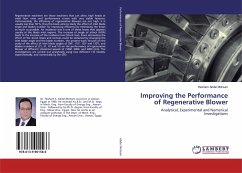Rehabilitation coatings of offshore equipment rarely perform as well as the original coating, despite the high cost involved. The performance gap is probably due to high relative humidity, salt contamination and limitations on the use of abrasive blast cleaning. Thus, this research aims to deepen the understanding of surface preparation parameters that affect organic coating performance. Carbon steel samples were subjected to a variety of surface alterations consisting of salt contamination, mechanical (wire brushing) and chemical (rust converter and remover) surface preparations followed by coating application and performance testing. The samples were first pre-corroded in a corrosion chamber to mimic degradation from service then surface preparations were performed after which a coating was applied. Coated new samples (RN) and fully corroded samples (SN) were the reference sets, while other samples were prepared to a variety of surface conditions. Visual inspection and electrochemical impedance spectroscopy (EIS) were performed prior to exposure and periodically during accelerated cycling corrosion testing for a period of 30 days.
Bitte wählen Sie Ihr Anliegen aus.
Rechnungen
Retourenschein anfordern
Bestellstatus
Storno








